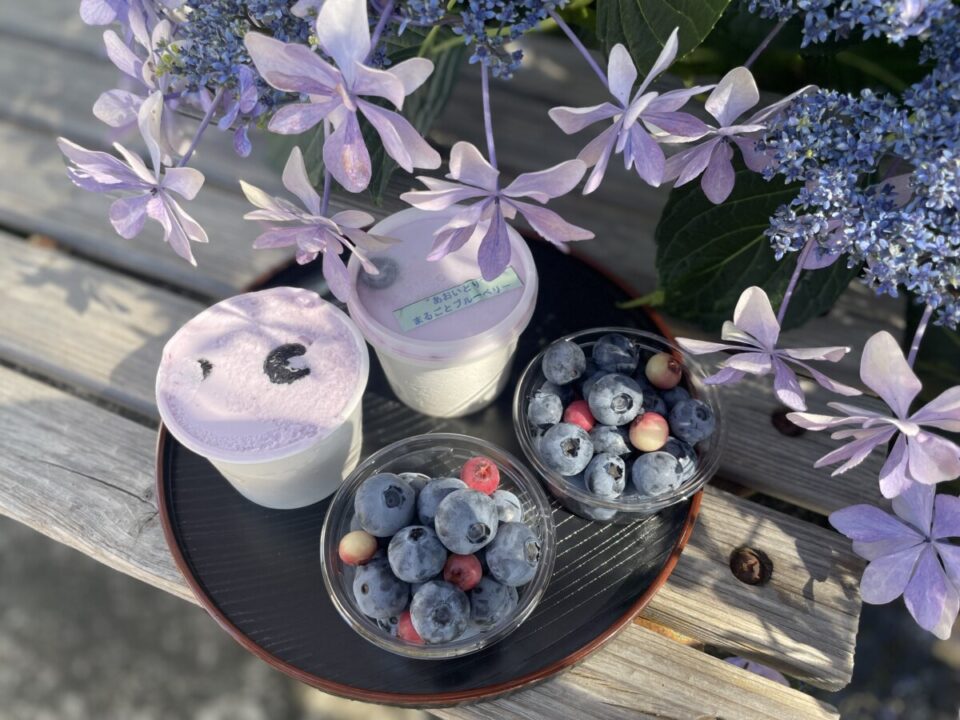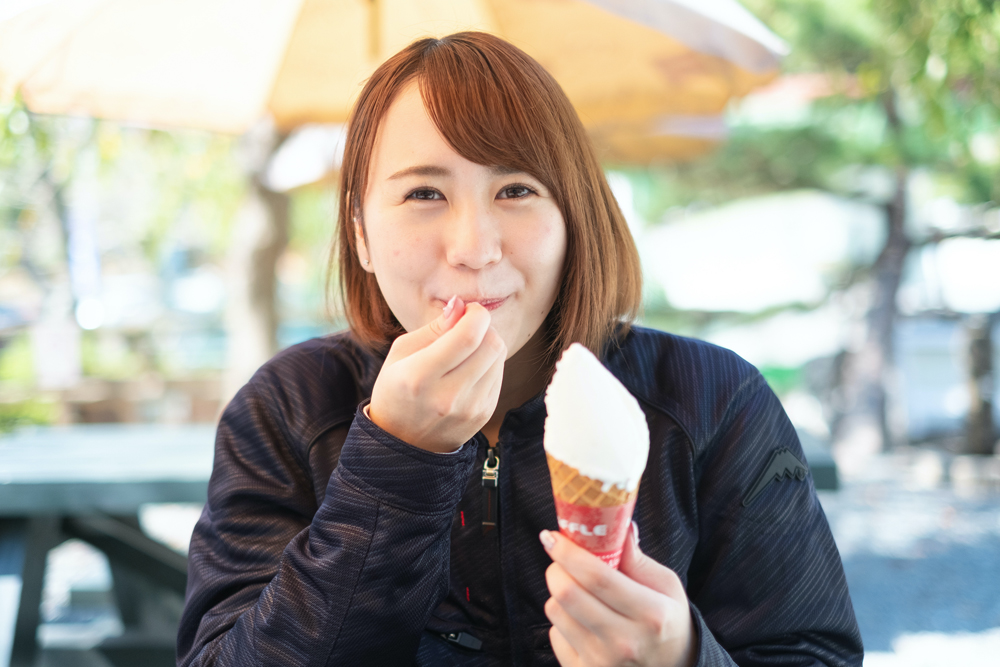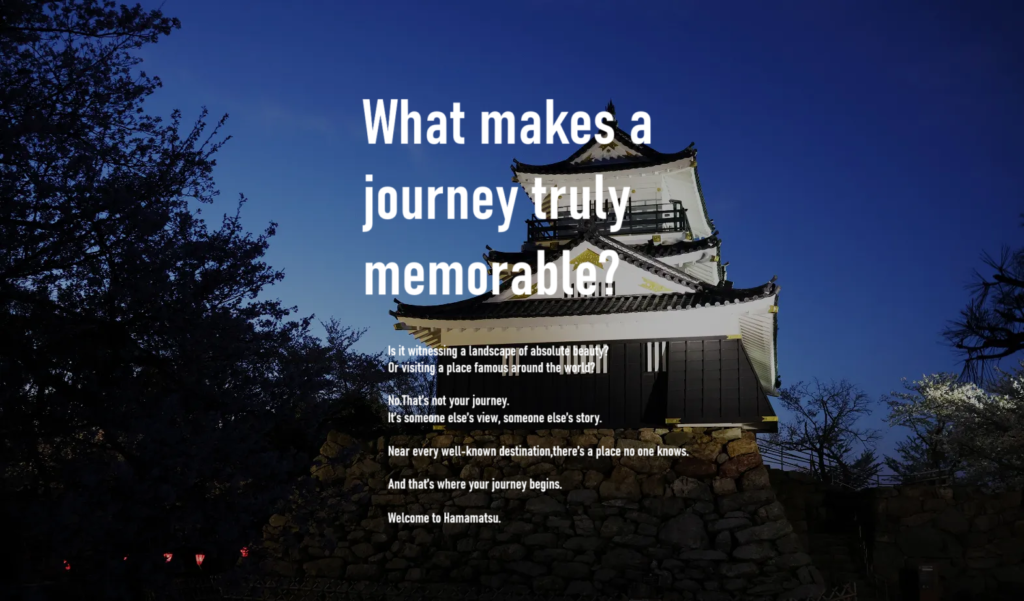Get to Know Hamamatsu
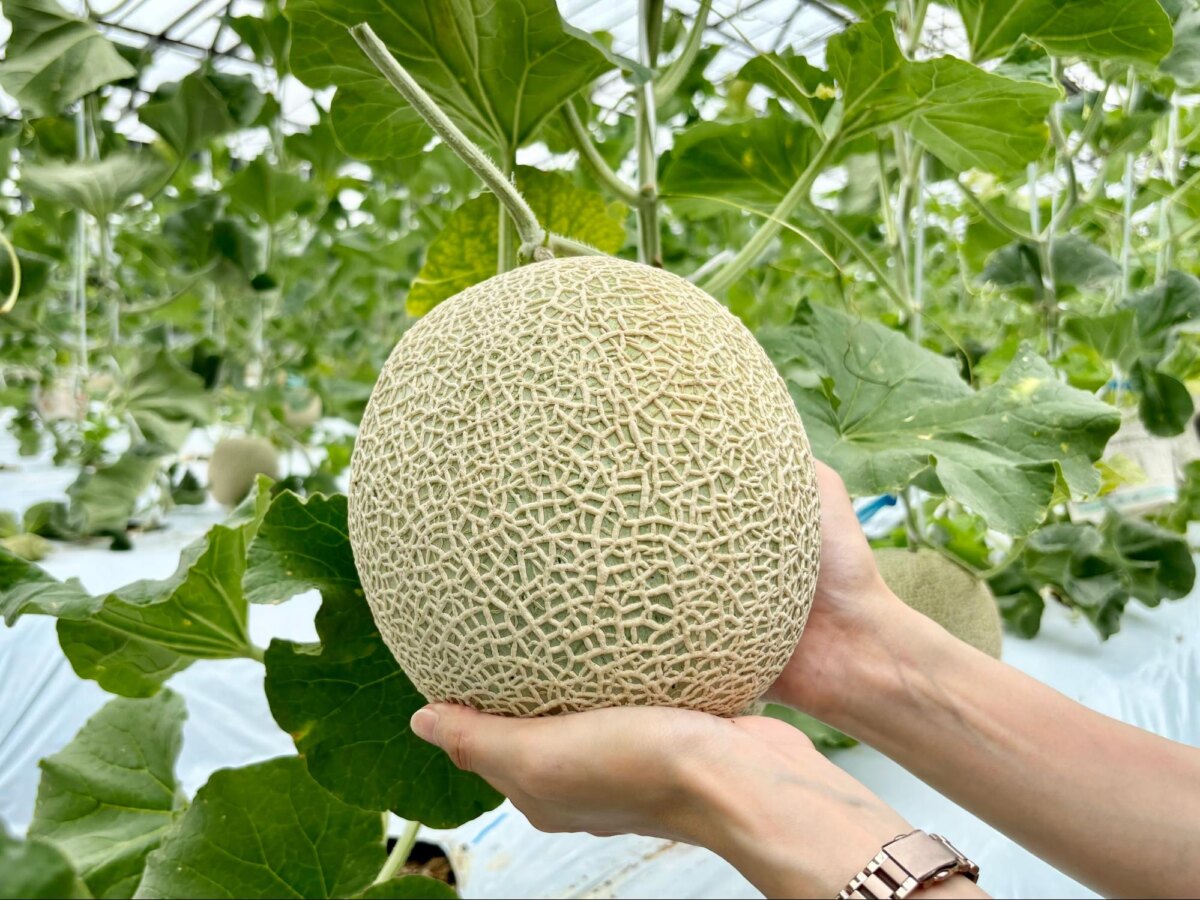
- Enjoy
- Eat
Take Home a Whole Melon! Try Melon Picking in Hamamatsu
Juicy and fragrant, muskmelons are a true delight. Did you know Shizuoka is one of Japan’s top producers? This article introduces Kashima Harvest, a farm where you can pick your own melon…
When you go melon picking at Kashima Harvest, you can take home the melon you harvested.
In addition, there is a tasting experience where you can enjoy chilled melons that are perfect for eating on the spot during the hot summer!
Let me introduce you in detail.
"Kashima Harvest" where you can pick melons
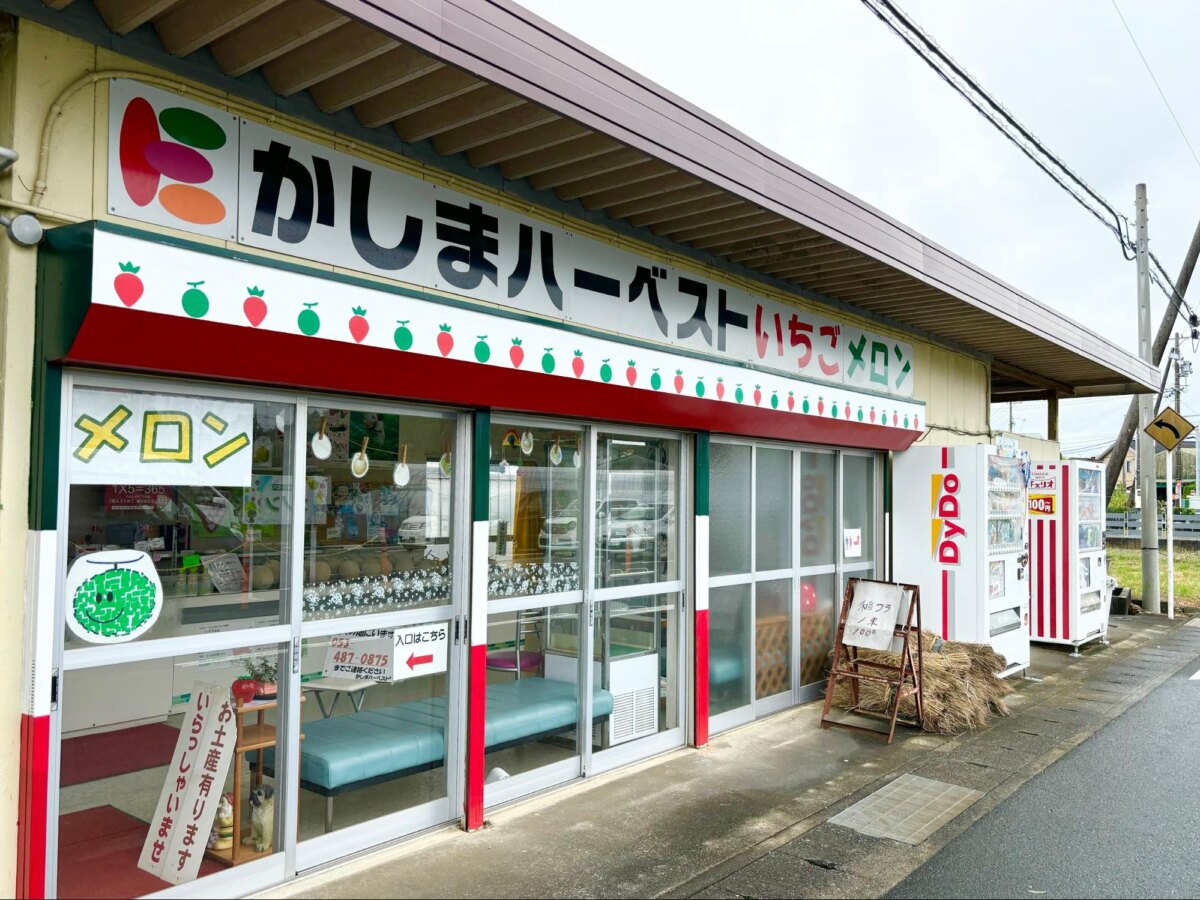
This time we visited Kashima Harvest, a tourist farm where you can enjoy strawberry picking from January to mid-May and melon picking from mid-July to the end of August.
It’s close to Kanzanji Temple, a tourist attraction in Hamamatsu City, and is a recommended spot for a fun trip!
This time, we asked Mr. Miyamoto of Kashima Harvest to teach us how to enjoy melon picking.
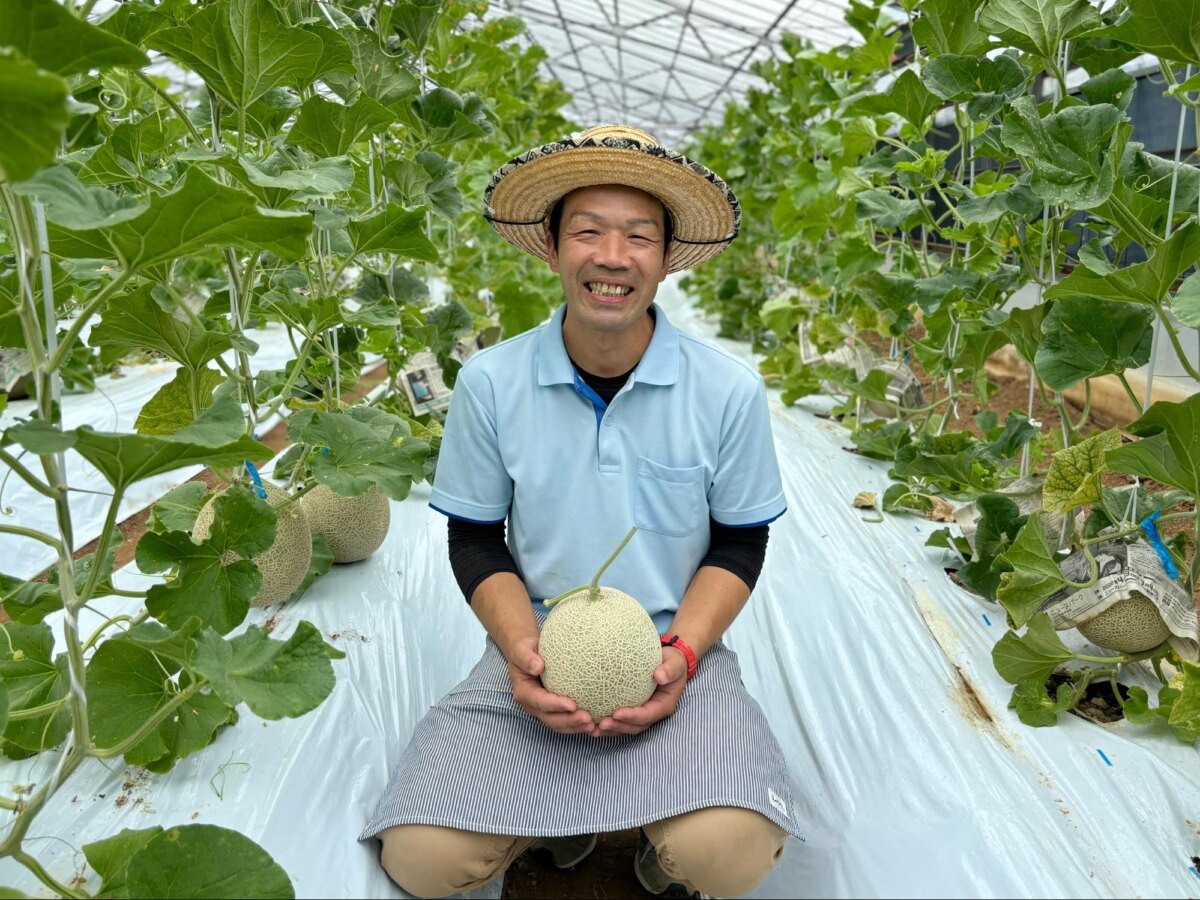
▲Kashima Harvest Toshihiro Miyamoto
There are three menus available for melon picking at Kashima Harvest.
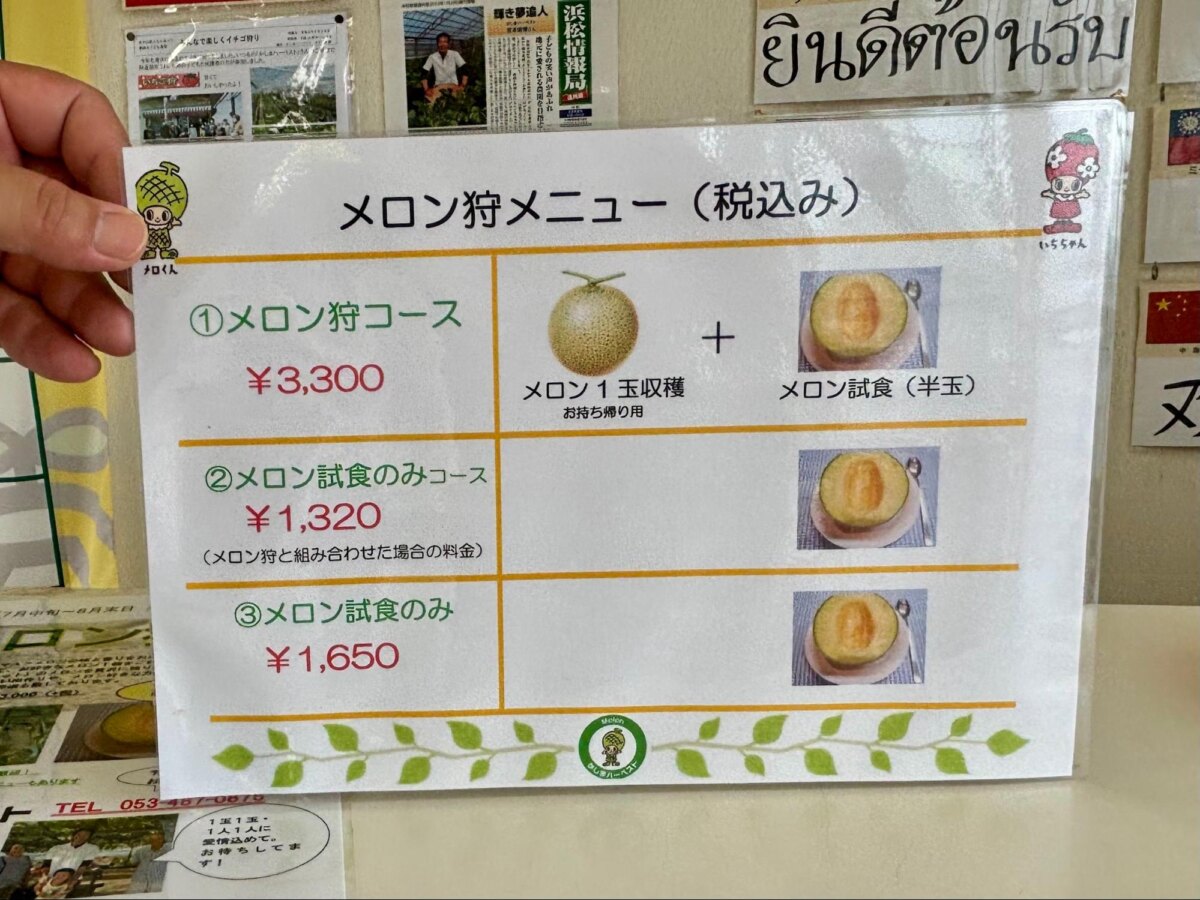
In addition to the ,”Melon Picking Course,” where you can harvest your favorite melons and take them home with you and sample half a melon, there is also a ,”Melon Tasting Only Course,” so you can also mix and match the menus.
For example, if you are applying as a family or couple, you can choose the ,”Melon Picking Course” for one person, and the ,”Melon Tasting Only Course” for the others.
Of course, customers on the melon tasting course can also enter the greenhouse with the melon picking course and watch the harvest.
Once you have selected your course and paid your bill, you can start your melon picking experience!
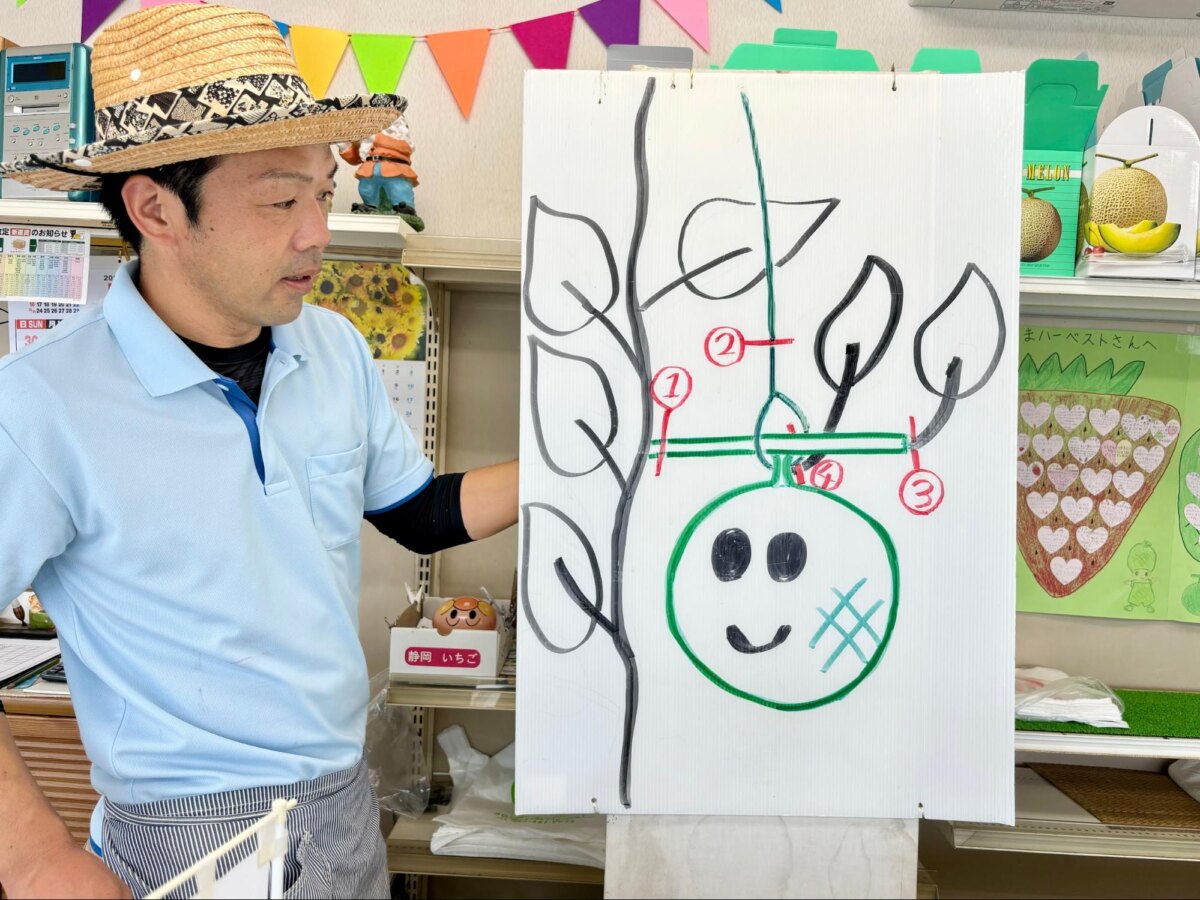
First, before moving to the house, we will give a lecture on how to pick melons.
Easy-to-understand illustrations are used to provide detailed instructions on how to properly harvest melons and the order in which branches should be cut, so even small children will be fine.
There are melons all over the house!
After receiving the lecture, move to the house with the staff.
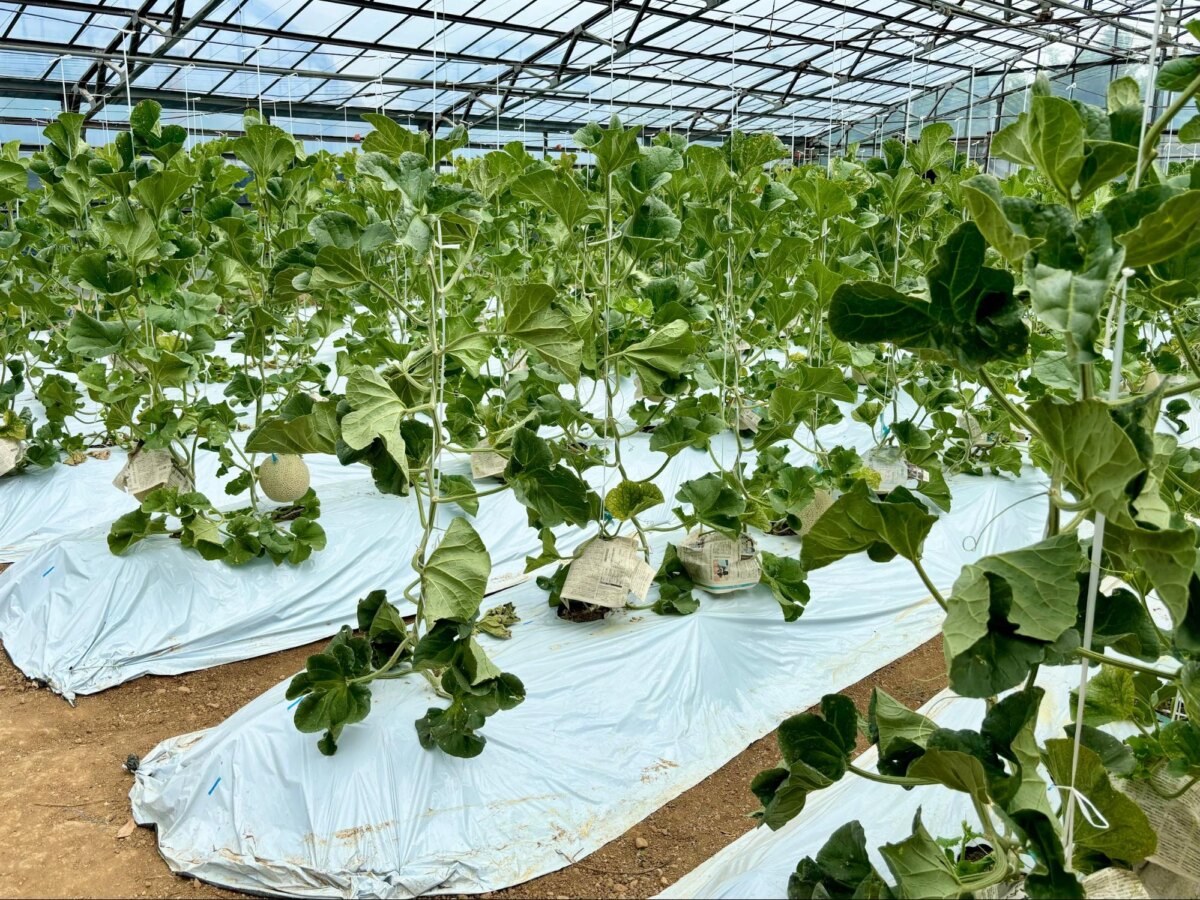
The inside of the house is lined with melon trees, making for an impressive sight.
It’s rare to see a melon growing into a tree, so both adults and children can’t help but say, “Wow!”
Your feet will be on dirt, so it’s best to wear sneakers or other shoes that are easy to move in.
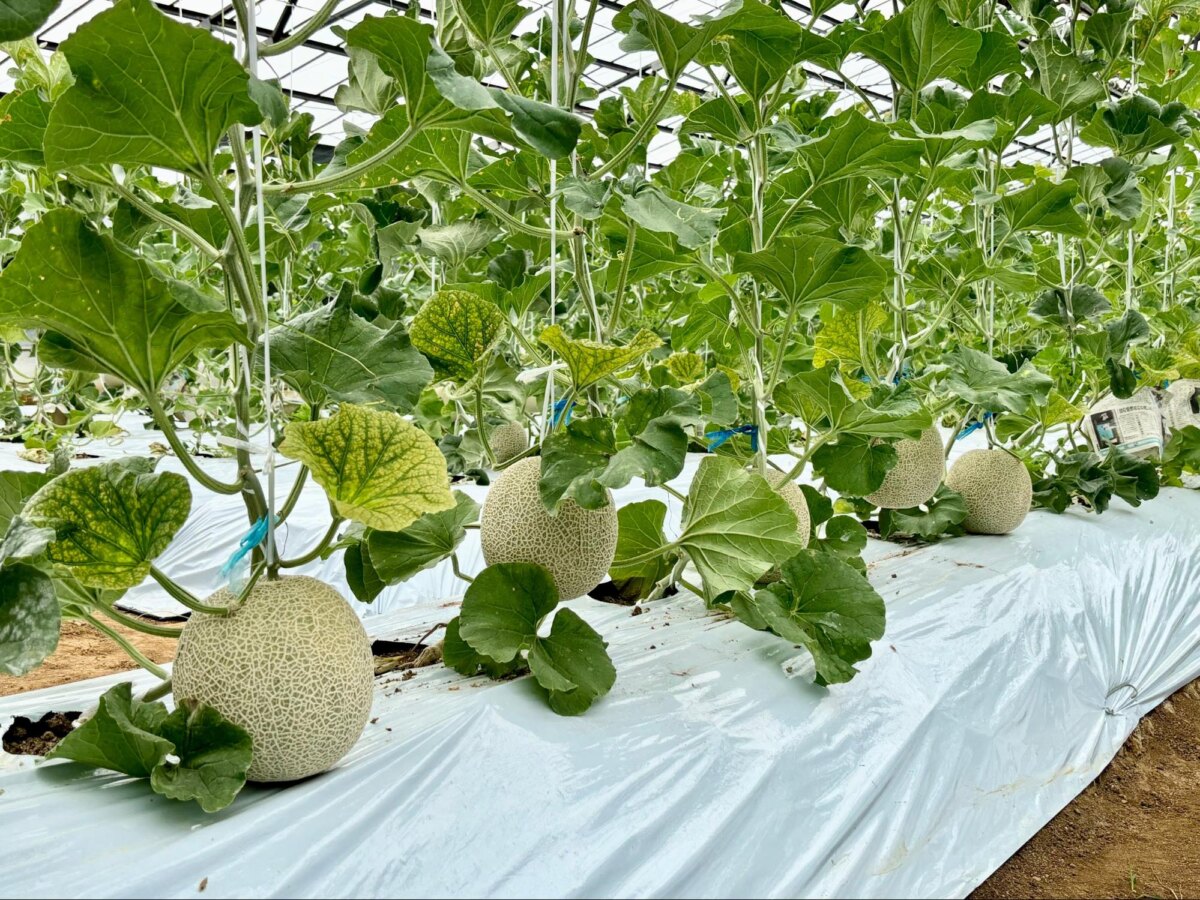
If you look closely, you will see that there is only one melon on each tree.
This is a cultivation method called “one tree, one fruit cultivation.” In order to create the rich, sweet flavor unique to muskmelon, one fruit is left and other fruits that are still growing are grown. It’s a way to extract it.
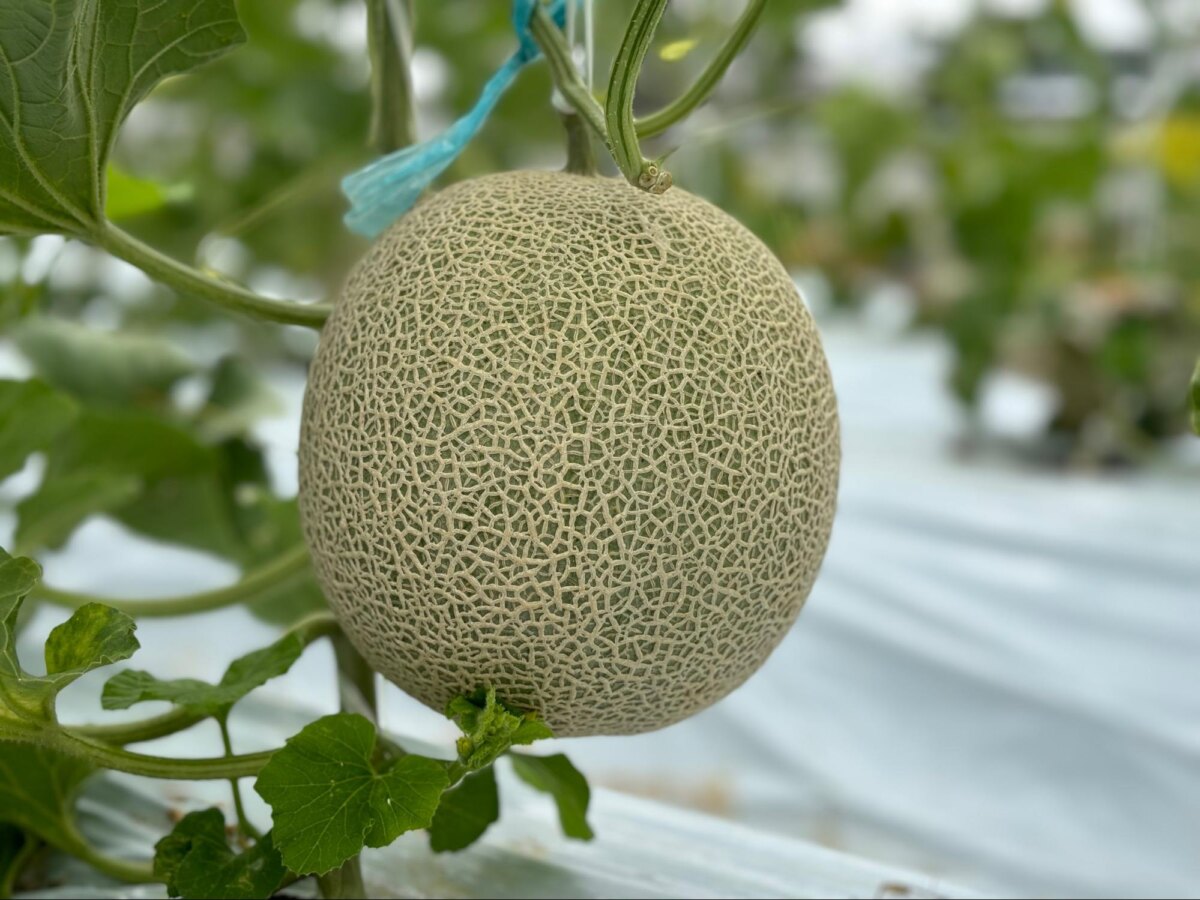
The cultivation method concentrates nutrients on each fruit to produce sweet and juicy melons, but picking each flower and small fruit by hand is very tedious work.
I was surprised to find out that these sweet, delicious and luxurious cantaloupes are made with great care and time.
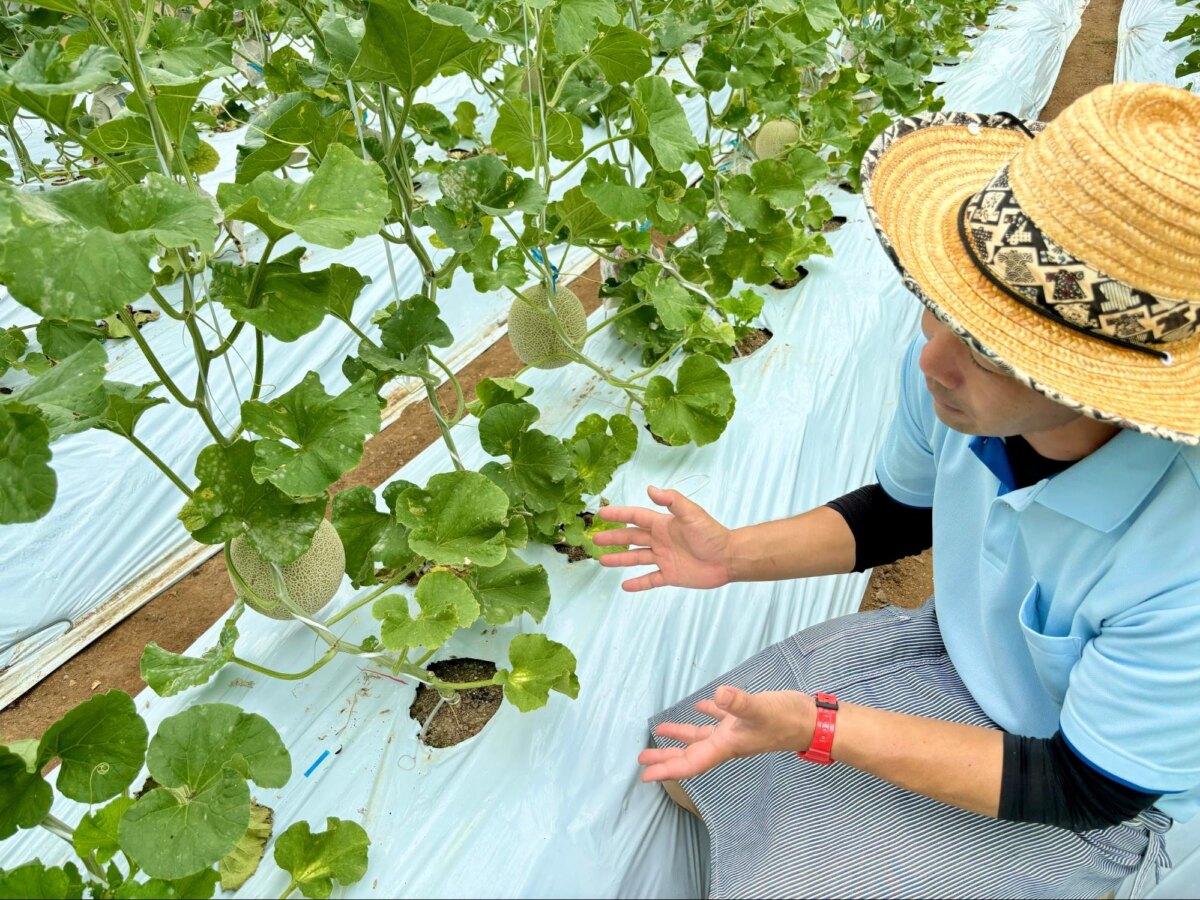
During the melon picking experience, the staff will explain the characteristics of muskmelons and how to grow them, making it popular for children to do their own research during their summer vacation.
”Actually, this large melon starts out as a small bulge at the bottom of the female flower that gradually grows,” she explained while looking at the actual flower, and the children were intrigued!
This is a female melon flower, with a small bulge at the bottom of the flower.
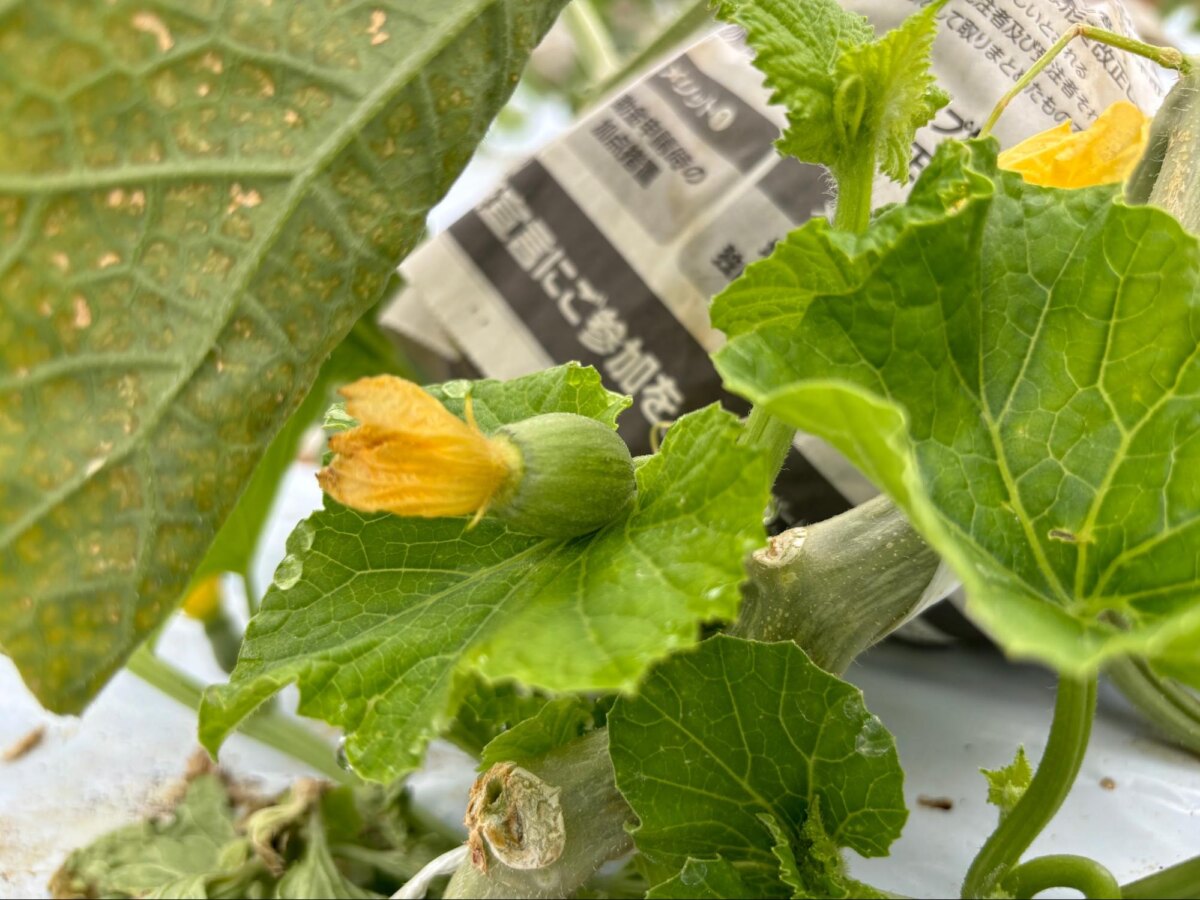
It’s strange to think that such a small fruit can grow into a large cantaloupe.
And here are the male flowers. You can see that the shape is different from the female flower.
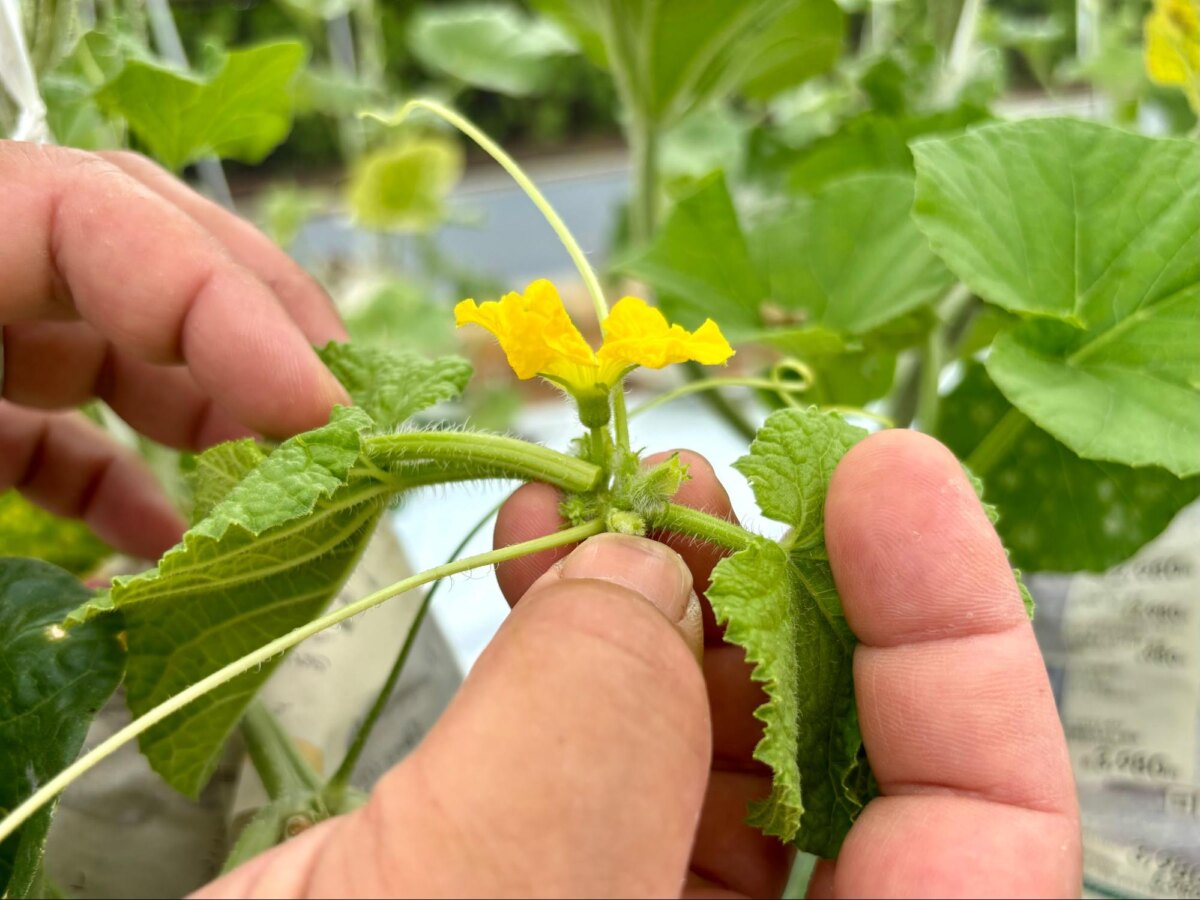
If you take photos with your child that show not only the harvest but also the growth and characteristics of melons, it will definitely be a different kind of independent research than usual!
It's finally time to harvest the melons! How to identify delicious melons?
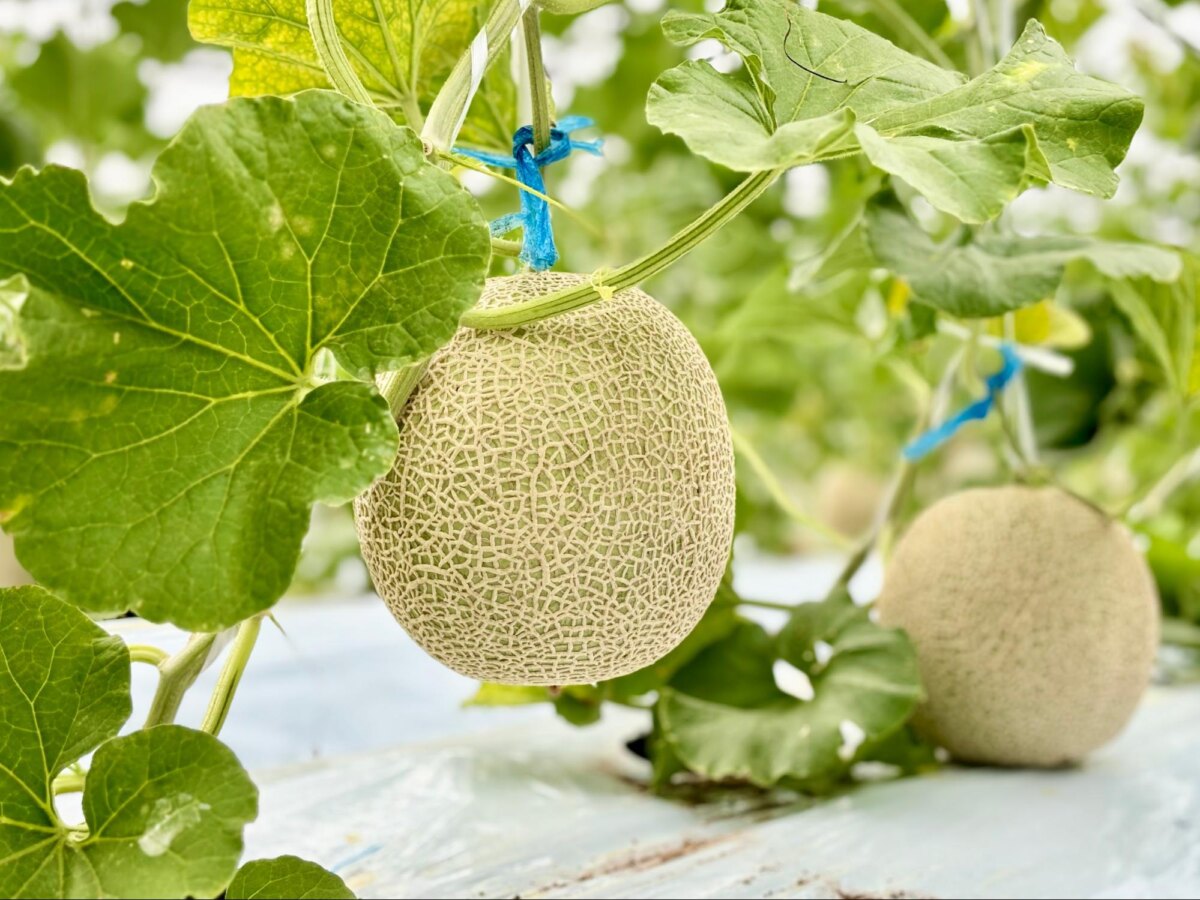
From here, it’s finally time to experience muskmelon harvesting!
”To identify a delicious melon, pay attention to the mesh pattern on the surface,” says Miyamoto.
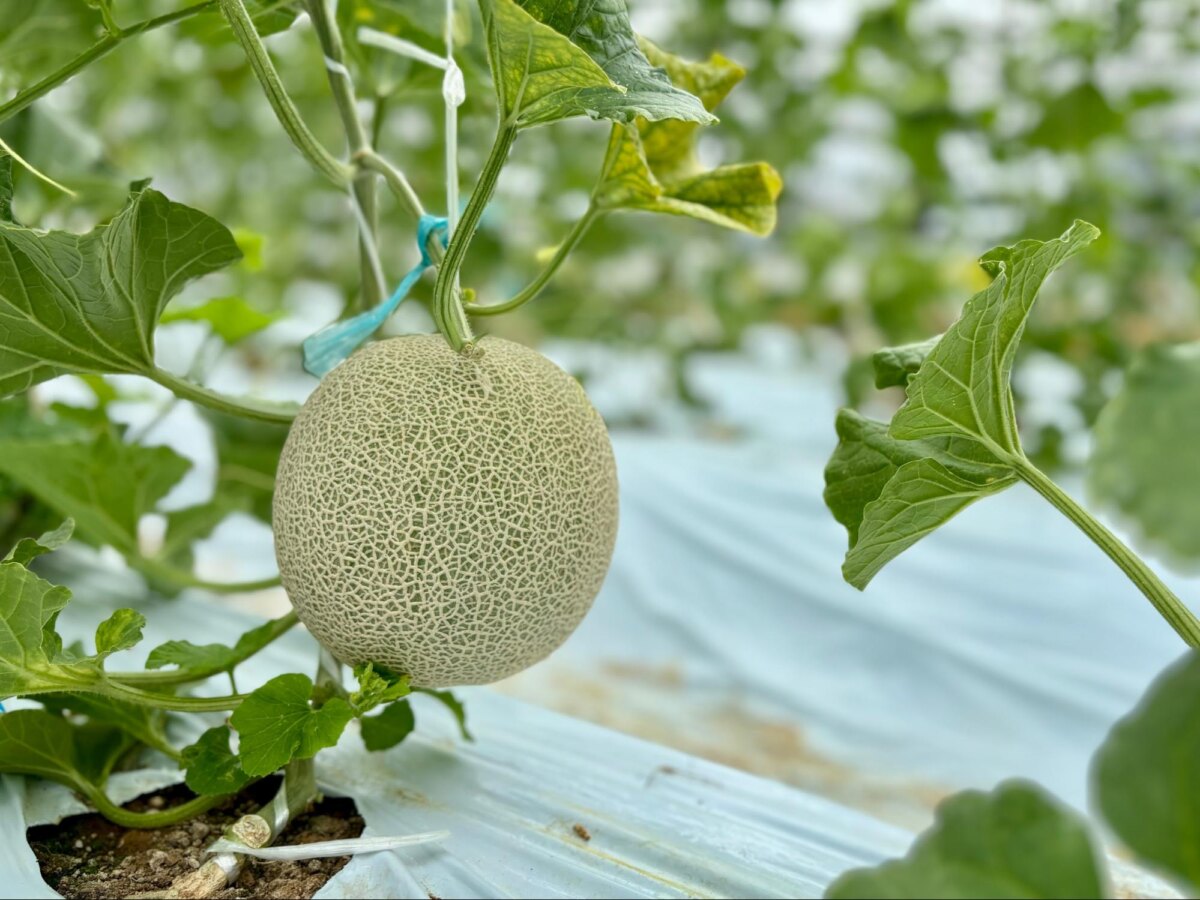
The melon’s mesh pattern is due to cracks forming on the outside of the fruit as the melon grows, and the components secreted to seal the cracks solidify.
Melons that have grown slowly and at an appropriate speed have fine, clear mesh patterns that are evenly distributed throughout.

Following Mr. Miyamoto’s advice, “The trick to choosing delicious melons when picking melons is to compare several melons, ”I carefully compared the cantaloupe fruits lined up and decided, “This looks delicious!” Identify the ball.
Once you have decided which cantaloupe to harvest, cut the branches with special scissors.
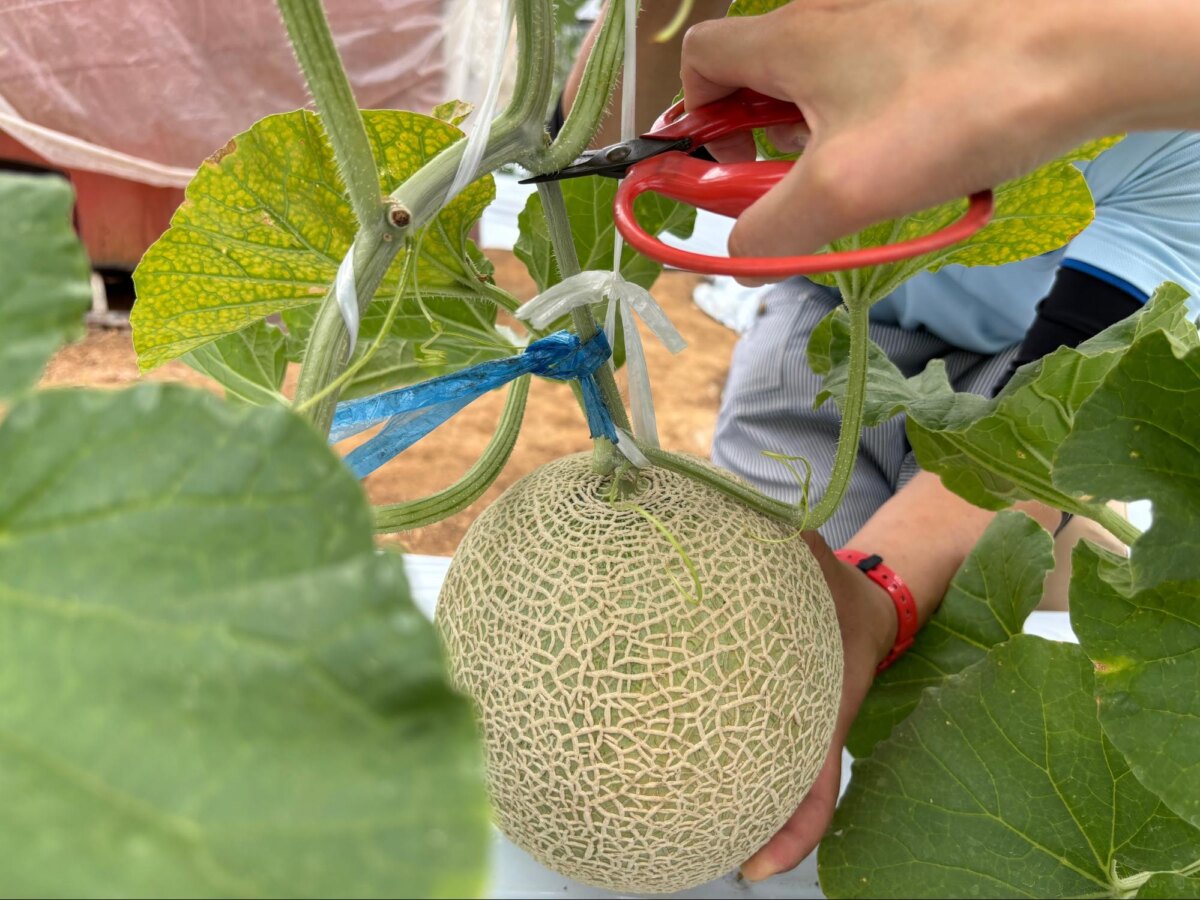
First, cut the branches that are connected to the tree.
At this time, if you cut the melon as it is, the heavy melon may fall, so be sure to firmly support the bottom of the melon.
Let’s harvest with the help of family and friends!
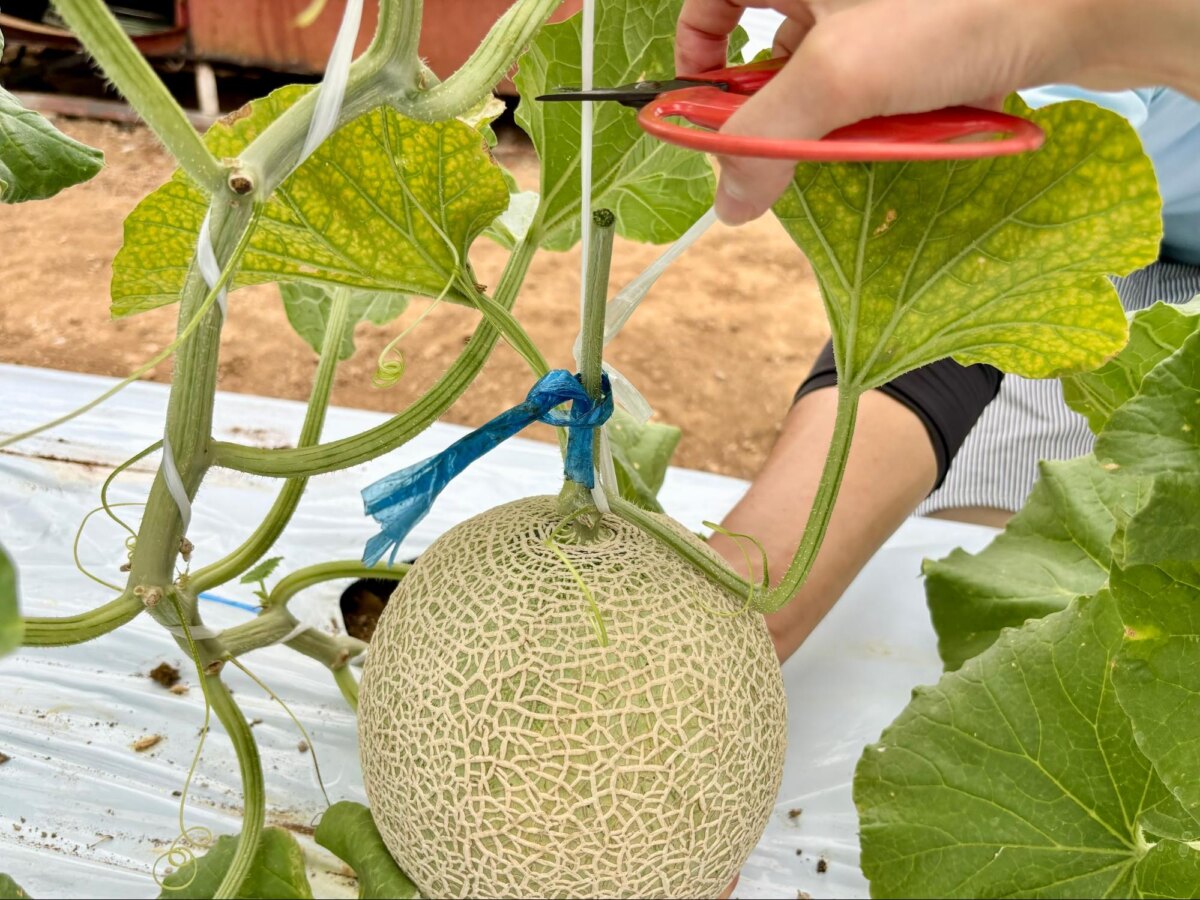
Next, cut the vinyl string that supports the melon.

Finally, cut off the left and right leaves of the stem.

When cutting the leaves, be careful not to cut off the important stem (T-shaped part) of the melon!
Even if you don’t know where to cut, you don’t have to worry because the staff will be with you.

I was able to harvest it safely!
When I held the melons that I had picked and harvested myself, they were heavier than I expected, and I felt a sense of attachment to them.
Once you have harvested the melons, you can put them in a special box and take them home with you.
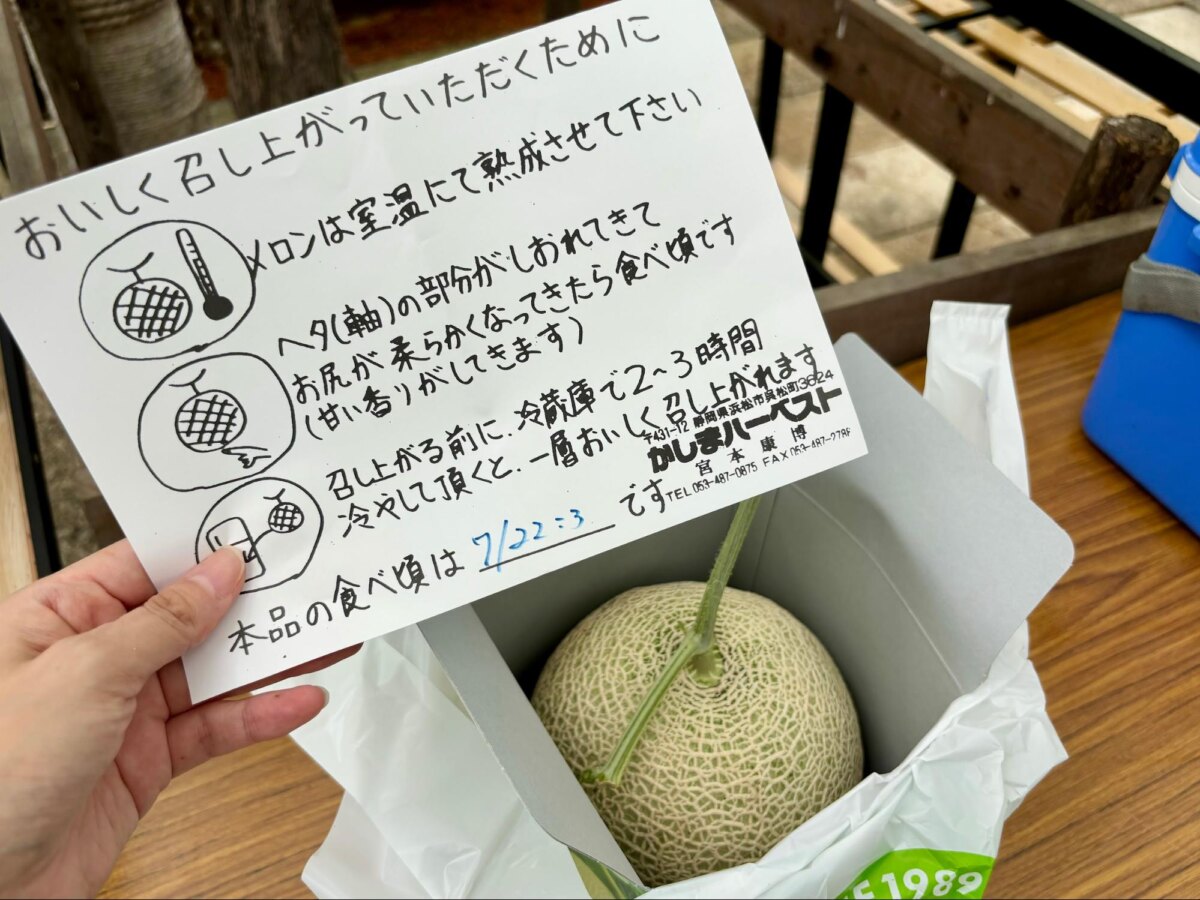
You’ll receive instructions on how to enjoy it deliciously and when it’s best to eat it, so it’s perfect as a souvenir from your trip!
Try plenty of cool melon!
After harvesting the cantaloupe, move to the eat-in space and have some tasting time.
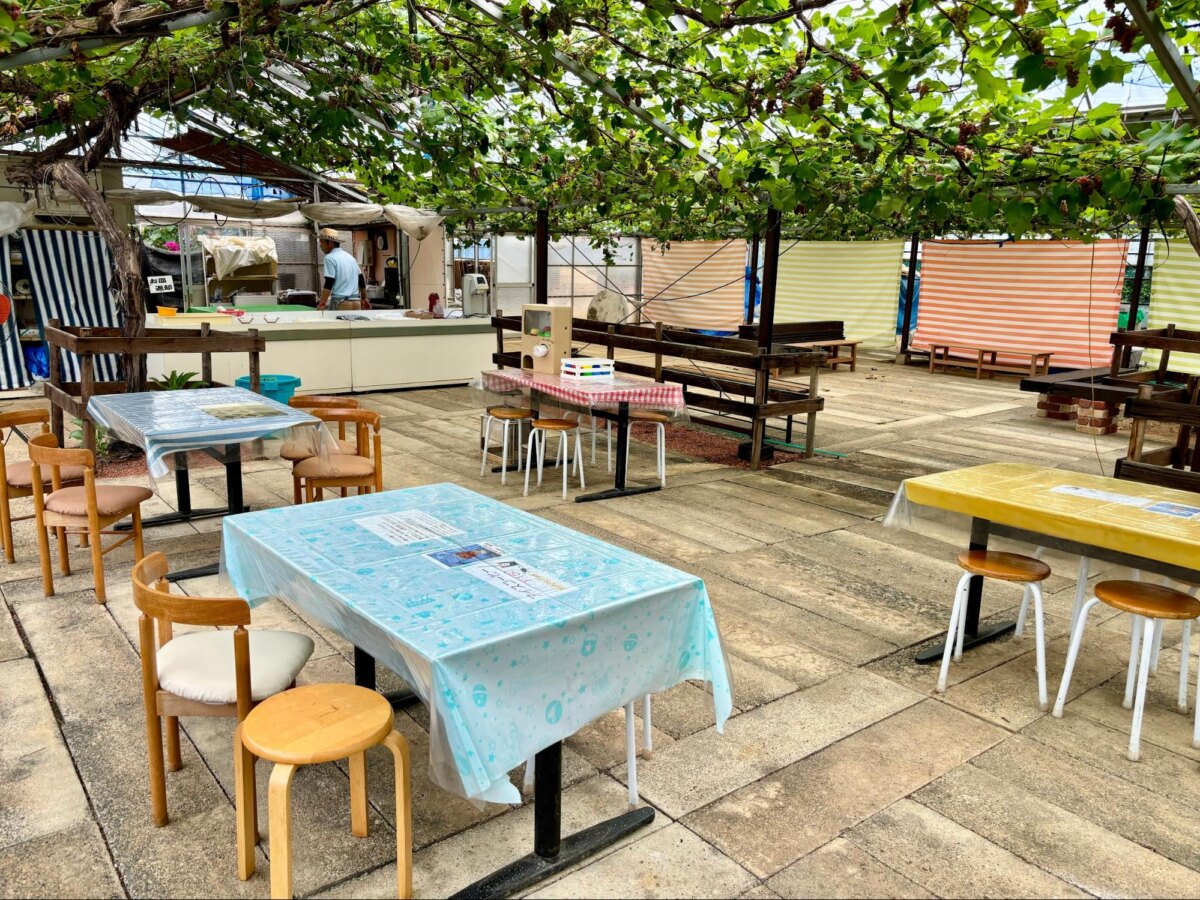
The eat-in space is a comfortable space where you can enjoy the cool breeze even in summer.
Whether you choose the melon-picking course or the melon-tasting-only course, you can enjoy a cool, chilled melon half-ball!
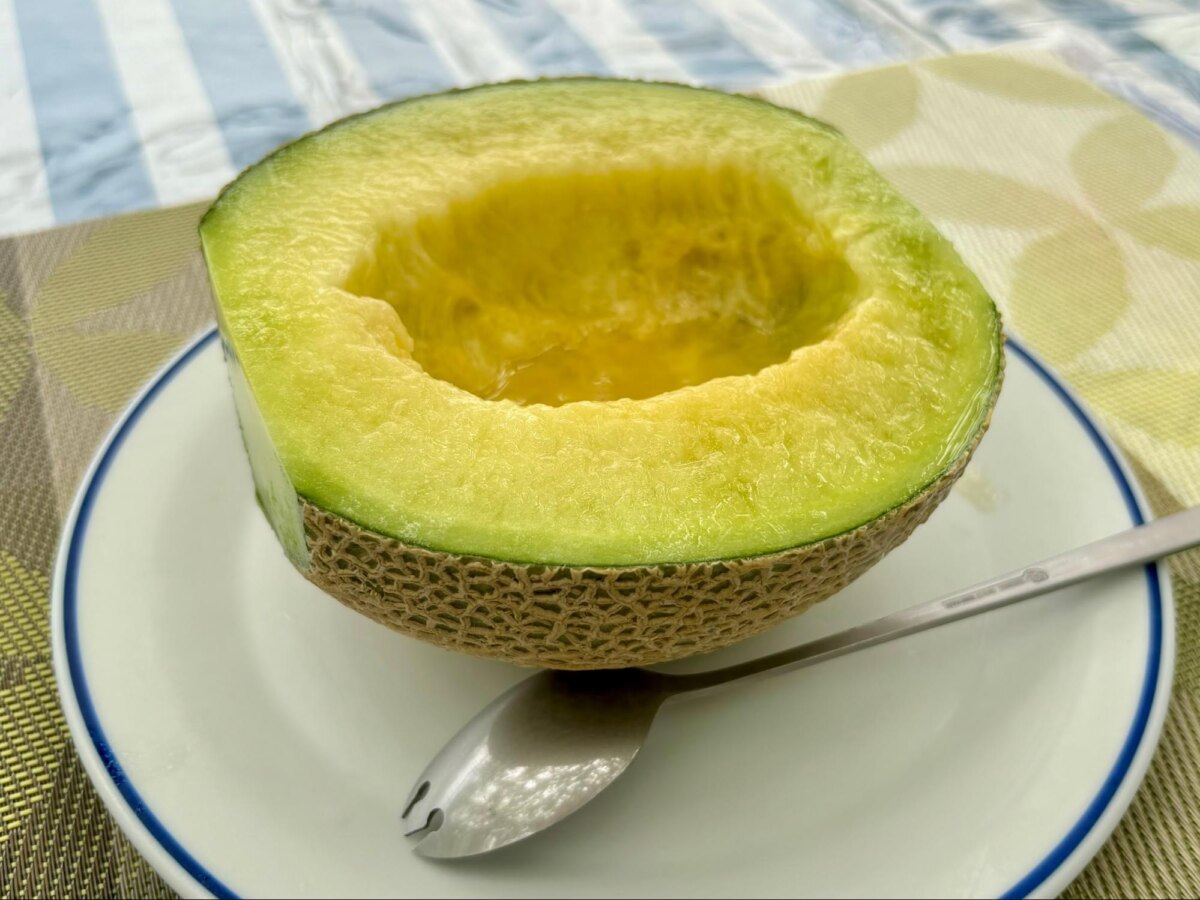
It’s so luxurious that one person can eat half a cantaloupe full of juicy juice!

When the muskmelon is ready to eat, you can scoop it up with a spoon and it will give you plenty of juicy juice.
I was moved by the sweetness, rich aroma, and melt-in-your-mouth texture that filled my mouth, and I finished half a ball in no time.
Options for the melon tasting include changing to raw ham melon for a slightly more adult taste (the melon will be cut into 1/4) and brandy (extra charge).
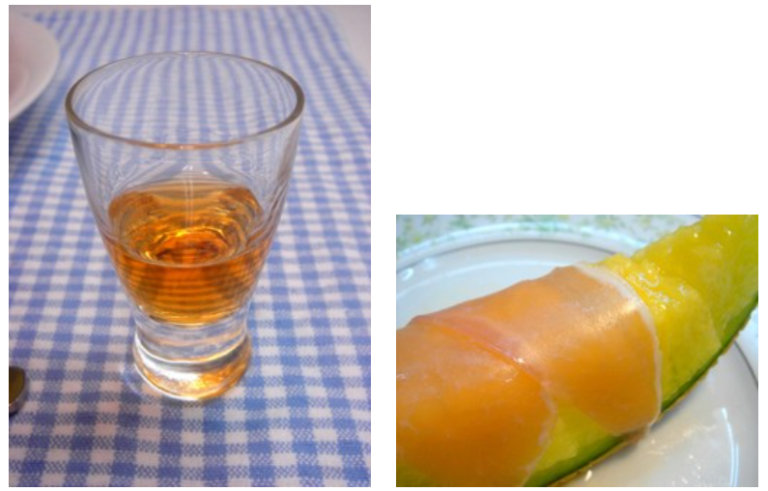
Adding brandy to it doubles the melon flavor. If you are interested, please feel free to ask the staff.
A “Big Melon! Contest” is also being held during the 2024 melon picking season.
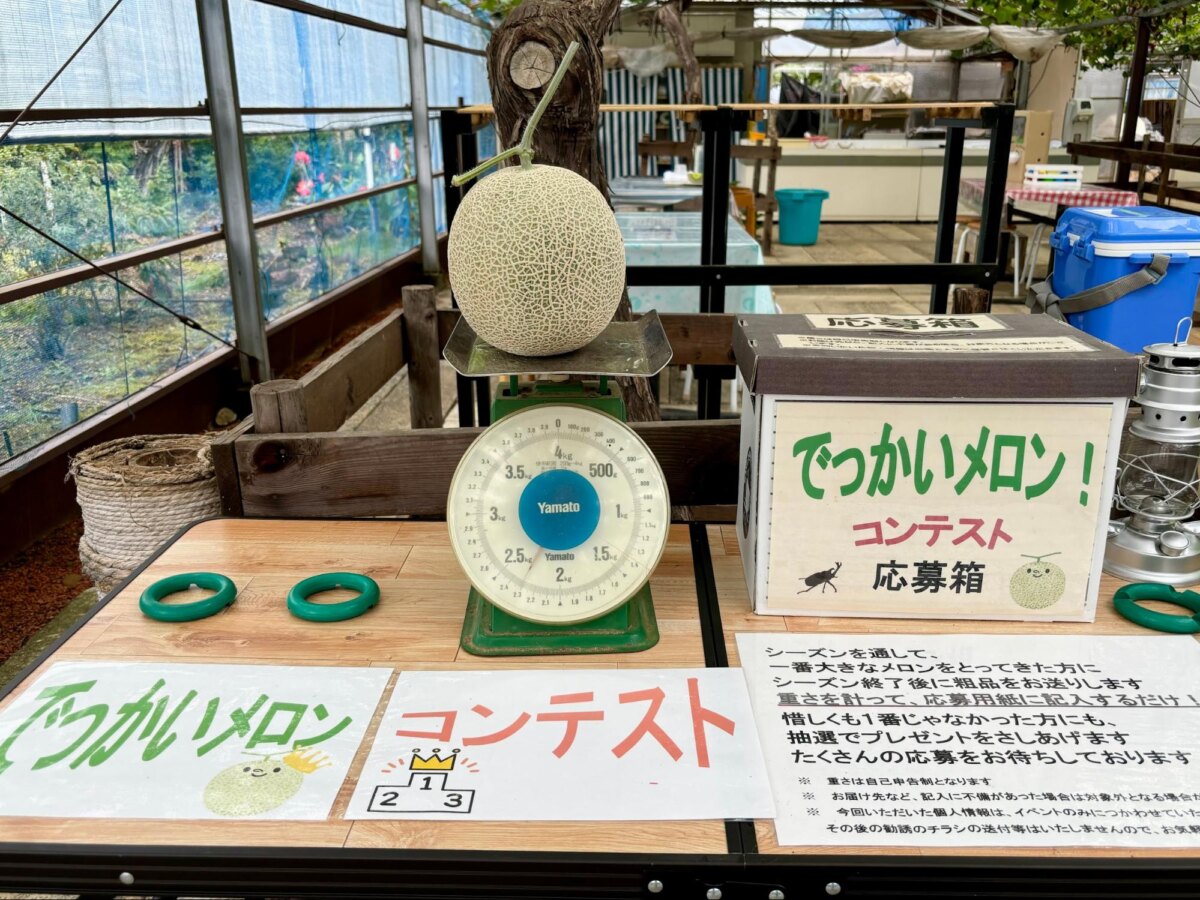
In this project, the person who harvests the largest melon throughout the season will receive a gift at the end of the season.
If you are confident in your size, please try weighing it in a contest.
Cantaloupes are also sold at the direct sales store!
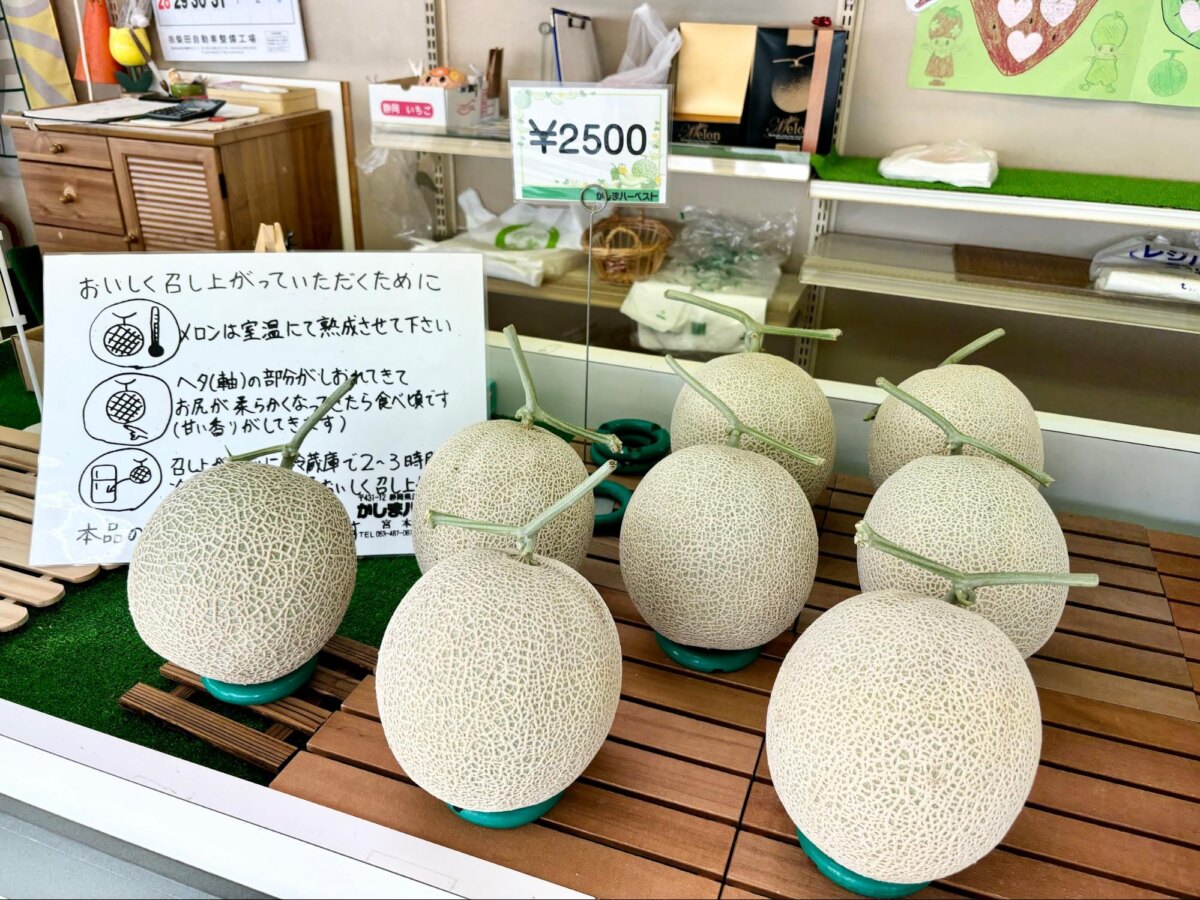
Kashima Harvest’s direct sales office also sells melons. If you would like to purchase melons as souvenirs in addition to the melons you have harvested, please stop by on your way home.
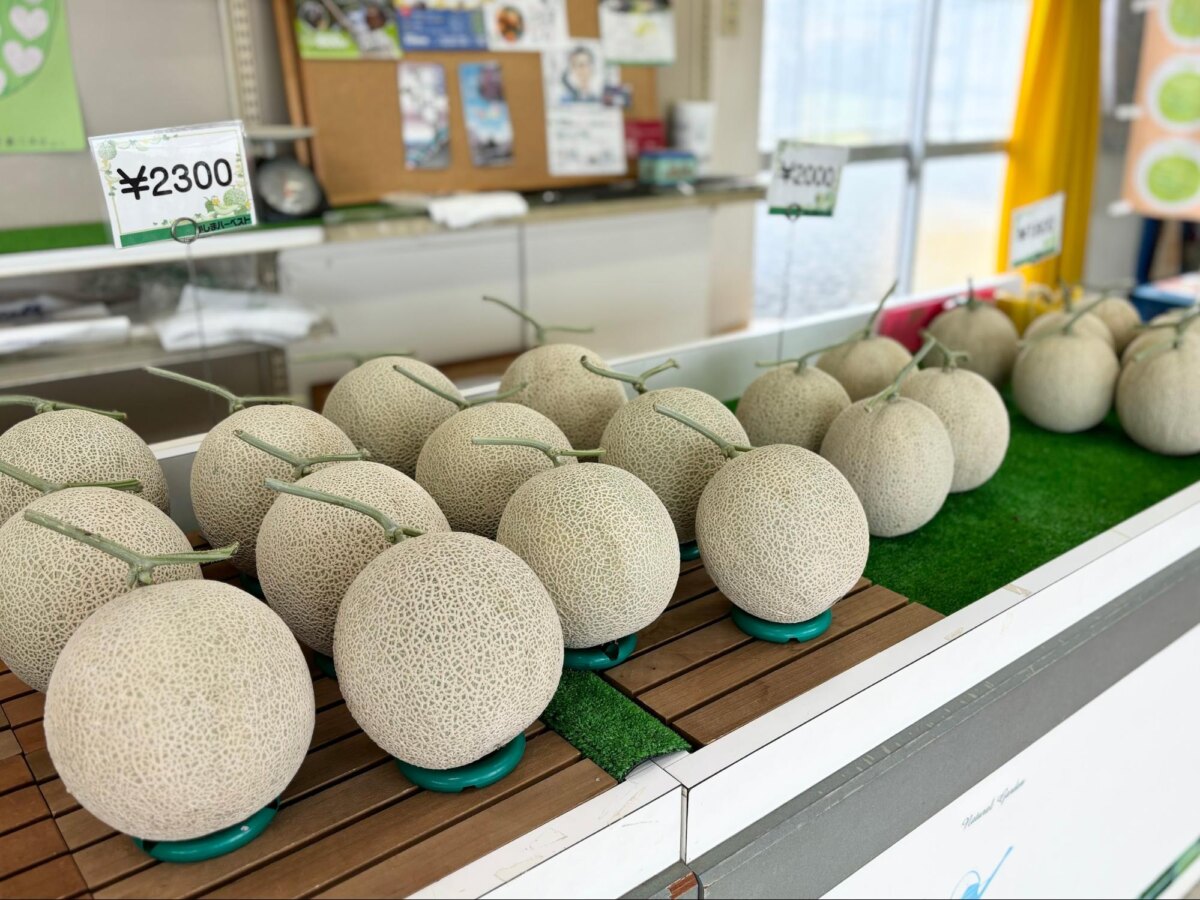
This time, we introduced melon picking at Kashima Harvest, where you can enjoy the deliciousness of the season.
It was a fun experience in addition to harvesting and tasting melons, such as getting a close-up look at melon cultivation, which you don’t often see, and having the staff tell me about melon cultivation!
This is a recommended activity that can be enjoyed by families, friends, and couples.
However, during the melon picking season, depending on the weather, the temperature at Melon House can reach around 40 degrees Celsius.
Please be sure to take adequate precautions against the heat.
【Adress・Opening hours】
〒431-1202
3624 Kurematsucho, Chuo-ku, Hamamatsu City
TEL: 053-487-0875
Melon picking period:
July 20th to August 25th, 2020 (Closed days: 7/22-26, 8/19-23)
Melon picking fee:
・Melon picking course: 3,300 yen (tax included)
・Melon tasting only course (if combined with melon picking): 1,320 yen (tax included)
・Melon tasting only course (if all members of the group only want to sample): 1,650 yen (tax included)
・Raw ham melon (1/4 cut): 1,320 yen (tax included)
Click here to make a reservation(Links to the Japanese site.)
↓↓↓

60-Minute All-You-Can-Eat! Enjoy Spring at Kashima Harvest
